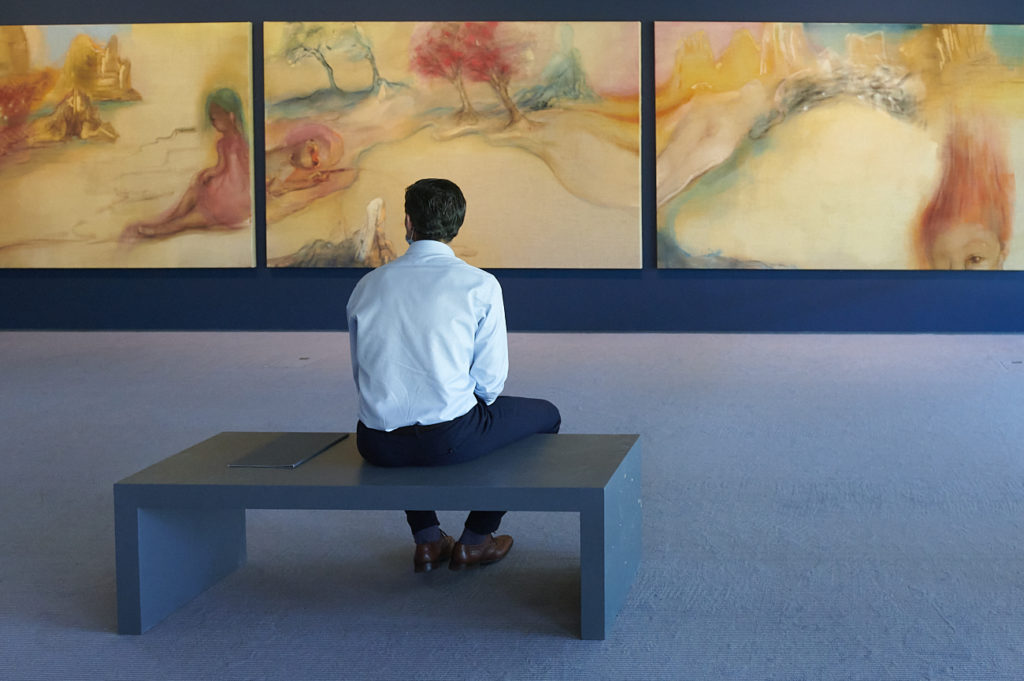Sharing Stories: Artist Anj Smith on Leonora Carrington’s ‘Old Maids’
In this interview, Anj delves into Leonora Carrington’s work ‘Old Maids’, and discusses the personal connection she feels to the artist, similarities between their practices, and Carrington’s enduring relevance and importance in the 21st century.
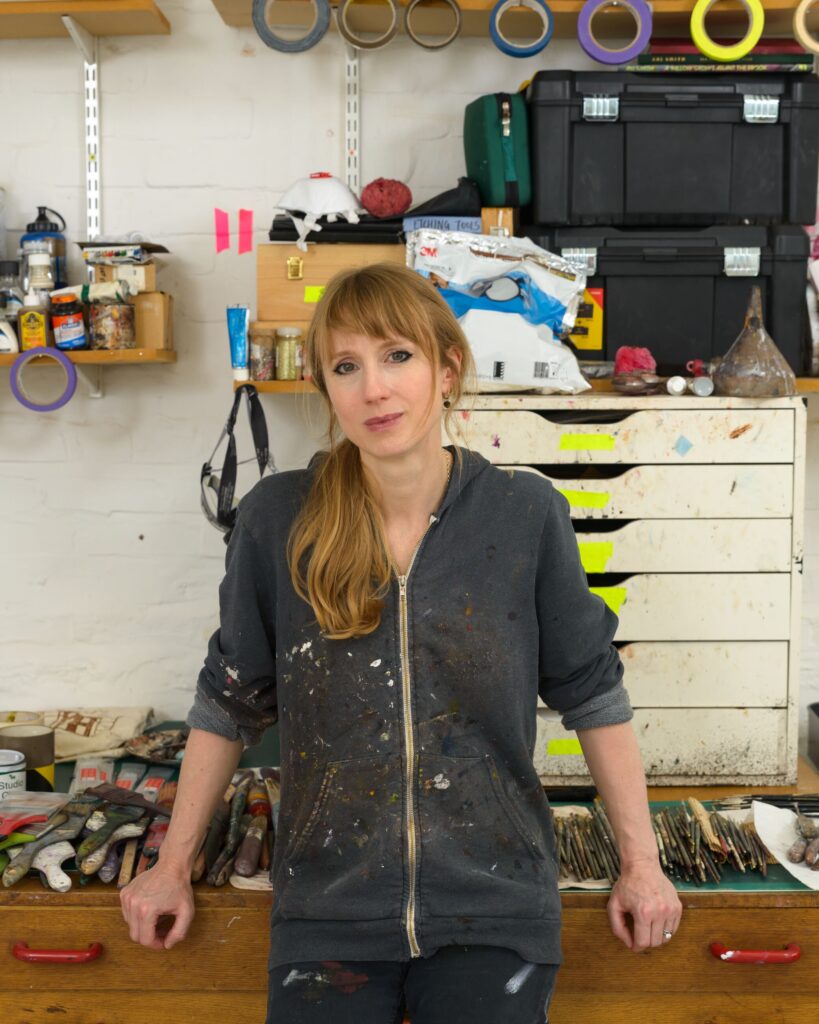
Anj Smith. Photo: Alex Delfanne. Courtesy the artist and Hauser & Wirth.
This interview was conducted as part of the Sharing Stories project, in which artists, academics and those with lived experience of some of the key objects in our collection were invited to give their interpretations. This project highlights the myriad of ways we, as humans, can form relationships with artworks much more like other people than inanimate objects. These relationships are deeply emotional and personal, informing the ways we live our lives, the knowledge we choose to pursue, or our artistic practices and modes of expression.
British artist Anj Smith’s work negotiates the space between the genres of portraiture landscape and still-life. Refusing fast consumption, her work explores issues of gender, ecology, anxiety, and eroticism.
Leonora Carrington is known for her unusual depictions of femininity and womanhood, rejecting the ideals of beauty. This also seems to be very apparent in your own work. How does feminism manifest in your work and what does it mean to you?
I could really relate to the female agency in ‘Old Maids’, partly because I think both Leonora Carrington and I share the experience of being boxed into the contextualisation of Surrealism. Within the movement, the female body was often used as some kind of cypher for a heightened, fetishised otherness – something unattainable.
But in ‘Old Maids,’ Carrington is making a very different proposition. I think she’s celebrating agency and being a female artist. In 1970, she said: “The idea that old masters are right and must be loved, honoured and obeyed, is, I think, one of the most destructive lies that has ever been instilled into the female psyche.”
So, it’s interesting to think about her preoccupation with questioning societal norms and unpicking conventions. She’s proposing a different world order and commenting on what it feels like to occupy a particular time and space.
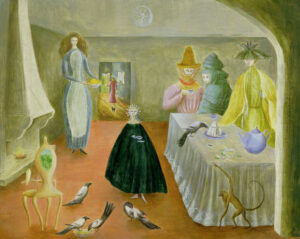
Leonora Carrington, ‘Old Maids’, 1947, Mexico.
Another similarity between your practice and Carrington’s work is the collapsing of boundaries between the human figure and the natural landscape. What kinds of conventions do you disrupt through this practice? And in what ways is Carrington’s style disruptive of convention in ‘Old Maids’?
This painting is disruptive, which is why it still holds such precedence today. You only have to spend a few moments looking initially to become quite unsettled by the work. The elongated fireplace is eerie. The aperture through which we view the scene, the awkward open doorway, and the room leading off at the back, for me, evoke a very unsettling, troubled psychological space.
For me, all of this epitomises the importance of hearing marginalised voices, and not just in terms of contemporary practitioners, but also looking back and seeing important artists like Carrington who were dismissed at the time.
Carrington is synonymous with the image of having a “baby in one hand and a paintbrush in the other,” and also with her struggles with mental health. Her personal autobiography really is a huge encouragement to those of us that are navigating impediments to our studio practice.
And she also seems to be able to articulate an imaginary world that’s beyond something that we can experience with our five senses. She uses that almost uncanny aspect of her work as a conceptual springboard to make us think about ideas of imaginary or potential worlds, and how we could do things differently.
What does subversion and subjectivity in art mean to you? And how do you think this particular work achieves that or subverts the norm?
This painting is a very important example of subversion and the power of art’s capacity for subversion in our thinking lives.
One detail that was thrilling to encounter was this tiny cluster of pearl-like eggs in one of the bottom corners. It felt like the right painting language to articulate a world contained within another world, a kind of punctuation point of potentiality, echoing the female agency at play in the work.
That really made me think about painting’s capacity to make us stop and engage deeply, which is such a countercultural proposition right now. Information is designed to be consumed quickly, which can sometimes lead to more shallow engagement with the world around us. And I think that is why paintings like this, but also the arts in general, are so important in social terms as well as in their own right.
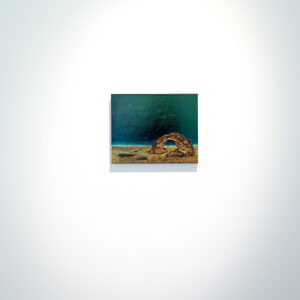
Anj Smith, Desert Epochs, 2014, Private Collection c/o Hauser & Wirth / London.
Can you tell us a little more about why you think paintings like this one are important, especially to you as a contemporary artist.
When I look at ‘Old Maids’, I feel greatly encouraged by someone who has already embraced painting’s capacity to have more than one conversation at the same time.
As an artist, there can be pressure to provide the one #key’ to understanding my work’s message – is it about gender? Or the problematic art historical canon? Or something else? All of those things might be relevant to varying degrees or, in some of my paintings, rejected entirely. It’s not a case of “if you understand this, you’ve understood the work.”
As conceptual contemporary artists, we’re meant to reflect the times we live in, and it’s not a time of great certainty or agreement. Looking at Carrington’s practice, I feel as though she had already broken that ground.
That’s why we think this painting makes such a great subject for the Sharing Stories project, as it encompasses the idea of having all these different perspectives that are equally valid, not only coming from the painting itself, but brought to it by the viewers.
Absolutely. During the lockdown, I had a strange experience at the Uffizi Museum looking at some famous paintings. I hadn’t seen these works since before covid, and I had always felt that I knew them like the back of my hand. But they suddenly appeared completely new to me. I realised I was bringing a whole load of life experiences to these paintings that I hadn’t before. I think that’s why a lot of painting really functions as conceptual art, because as the viewer, you are making the painting ‘happen’ in your response.
That’s a wonderful way to look at painting and encapsulates so much of the approach we take to the visitor experience at the Sainsbury Centre. We want people to see art as something to be engaged with and connected to. How do you feel you connect with this work?
I often describe works such as this as an insect trapped in amber; the moments of Carrington’s making unfold in the viewer’s presence, and time almost becomes warped or condensed. And actually, it can also stretch out again after the visit, when you find yourself thinking about that work again, and having an ongoing dialogue with it in your mind.
The work comes to life when you perceive it, as though the act of looking at it transcends time.
Listen to the Sharing Stories tour on the free Smartify app.
You might be interested in
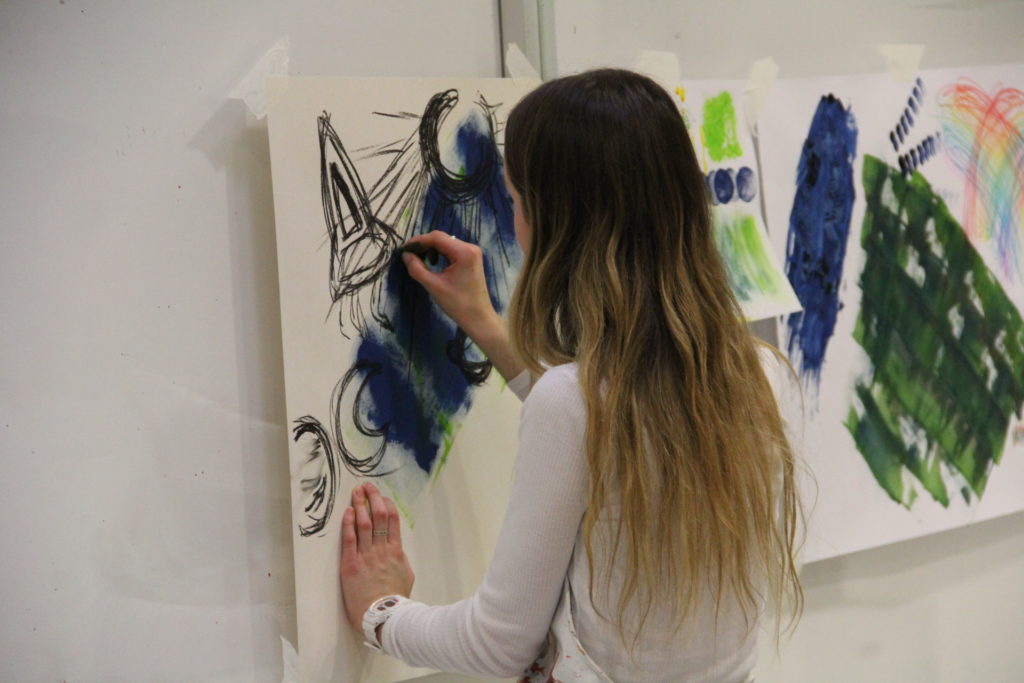
Learn & Create
The artworks in our collection and exhibitions come to life when you join us to look, think, discuss, question, create, play and tell stories around them. Find out how you can get involved and become a part of our learning community.
